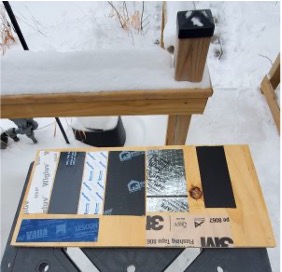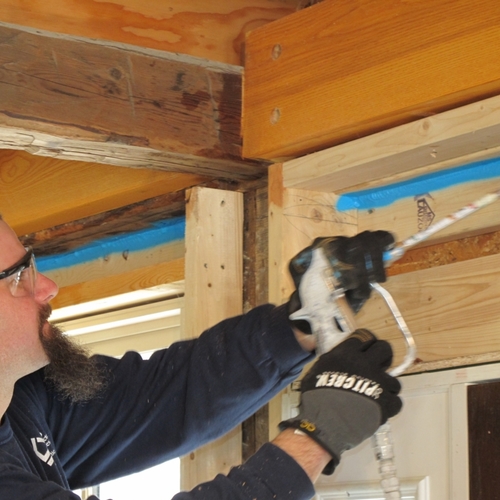
I once heard Dr. Joseph Lstiburek use the word “pookie,” which made me chuckle. He was referring to a fluid-type product used to seal something. In construction, we use a lot of different caulks, sealants, and adhesives, all of which are available in some sort of tube or bucket. A walk through the caulking aisle at any hardware store or lumberyard can make your head spin. Here, I aim to advise on what to use when and where.
Sealants vs. adhesives
The purpose of sealants is to bridge a gap between two surfaces. Some types of sealants are a cosmetic solution, such as making a small gap between two pieces of trim disappear; they make the joint look good at a low cost. Other sealants are more effective at stopping air, water, or other undesirable elements from moving in or out of the joint; these products tend to be more expensive than standard painter’s caulk. Sometimes these purposes are combined; the seal needs to both look good and perform.
Most sealants have lower strength bonds but high flexibility. Adhesives, on the other hand tend to have high bond strengths, usually with less flexibility. Adhesives are used to hold two or more surfaces together with a chemical bond, if you will. There are also hybrid adhesives that act as a sealant, offering the best of both worlds.
Most manufacturers of sealants also make adhesives. Titebond, Loctite, DAP, Sashco, Liquid Nails, Prosoco, and Sika all make quality sealants that can be found at local hardware stores, box stores, and lumberyards.
Types of sealants
Different sealants have different properties designed to work with a variety of substrates, temperatures, and range of flexibility rates. No single sealant addresses all situational variables. It is crucial to understand the strengths and limitations of different products,…
Weekly Newsletter
Get building science and energy efficiency advice, plus special offers, in your inbox.

This article is only available to GBA Prime Members
Sign up for a free trial and get instant access to this article as well as GBA’s complete library of premium articles and construction details.
Start Free TrialAlready a member? Log in














4 Comments
Thanks for this Randy. I'm finding it really useful.
We are spoiled for choice now and can source the appropriate product for every use, but (says the old guy) I have to say I miss the days when you had two of three choices at the hardware store and didn't have to flex your grey matter to make the decision.
Thanks Malcom, in researching for this article, I found myself off task with all the information that is available online. You are right, so many choices. In the end, it was easiest to use the manufacturer's websites for the majority of the information.
"When sealing either a corner or flat joint, it’s best if the seal includes only the two surfaces requiring the seal. "
For far more information than you would ever want to know on sealant joint design, check out Dow Corning's Technical Manual, pages 62 onward.
https://www.dow.com/documents/en-us/app-tech-guide/62/62-1112-dow-corning-americas-technical-manual.pdf?iframe=true
"Silicone sealants have been used in the construction industry since the 1930s. This sealant bonds well to glass, plastics, and other non-porous materials, but poorly to masonry and concrete products and itself. "
As an FYI, the correct silicone formulations are outstanding for compatibility with masonry. They need to be "neutral cure" (*not* acid cure--the ones that smell like vinegar when you install them). Check out page 8 of Dow Corning's technical manual.
Thanks for the link Kohta, very informative. I've used a lot of acetic (acid) cure silicones in the past, some strong enough to make my eyes water. Good to know the neutral cure works well with masonry products. Thank you.
Log in or become a member to post a comment.
Sign up Log in